Renewable Energy
96% of Australians want renewables. And why not? Renewable energy is clean, reliable and affordable.
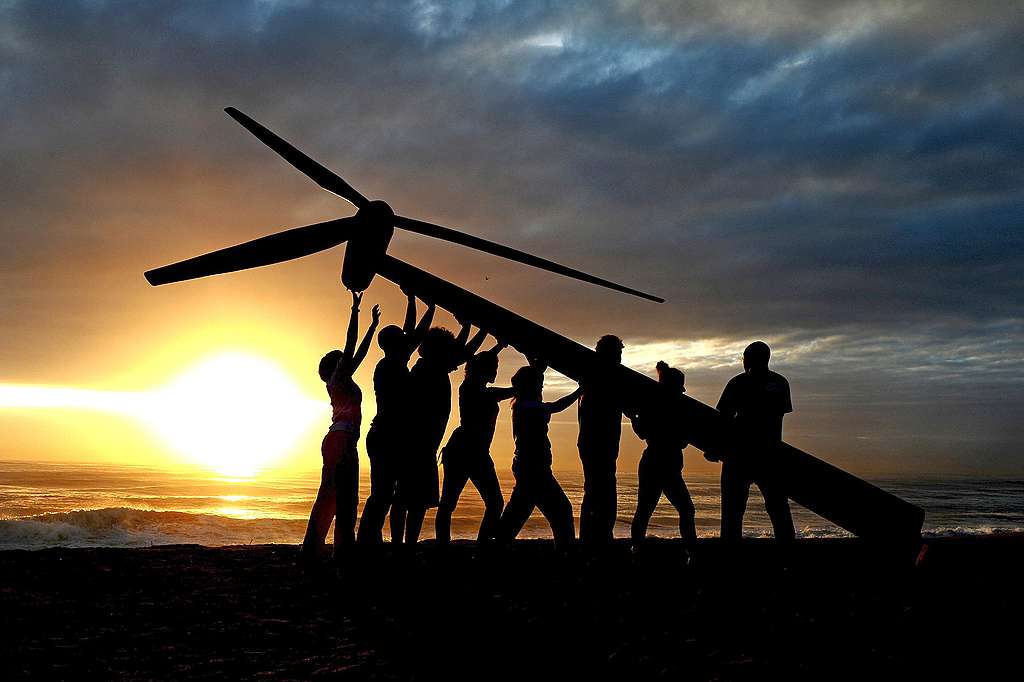
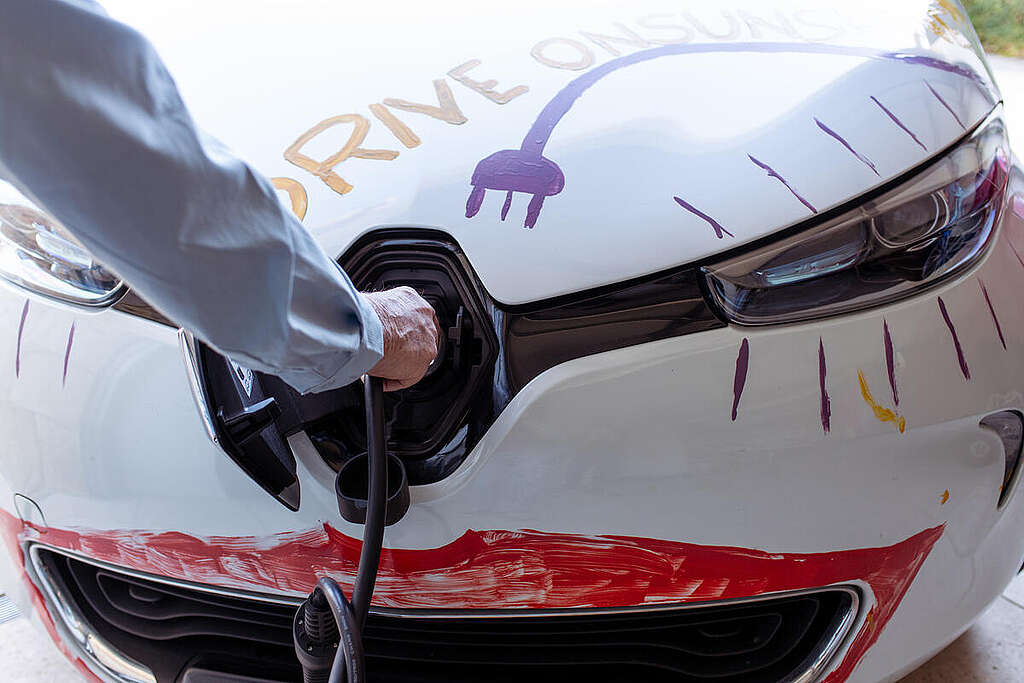
It’s time for a safe climate, clean air and energy independence. It’s time to Electrify. Transport is one of the biggest sources of climate pollution in Australia – it alone counts for almost one-fifth of our total emissions! – and it’s only growing. The need to electrify our transport system has never been more urgent.
Sign petitionThe problem
Major companies and institutions consume around 70% of Australia’s electricity supply. The problem is, most of this electricity comes from dirty coal, and coal is the single biggest driver of climate change in Australia.
But if major companies publicly commit to using 100% renewable energy – and match that commitment with action, it’ll not only kick-start hundreds of new solar and wind projects across Australia, it’ll create thousands of new jobs and take huge amounts of dirty energy out of the grid.
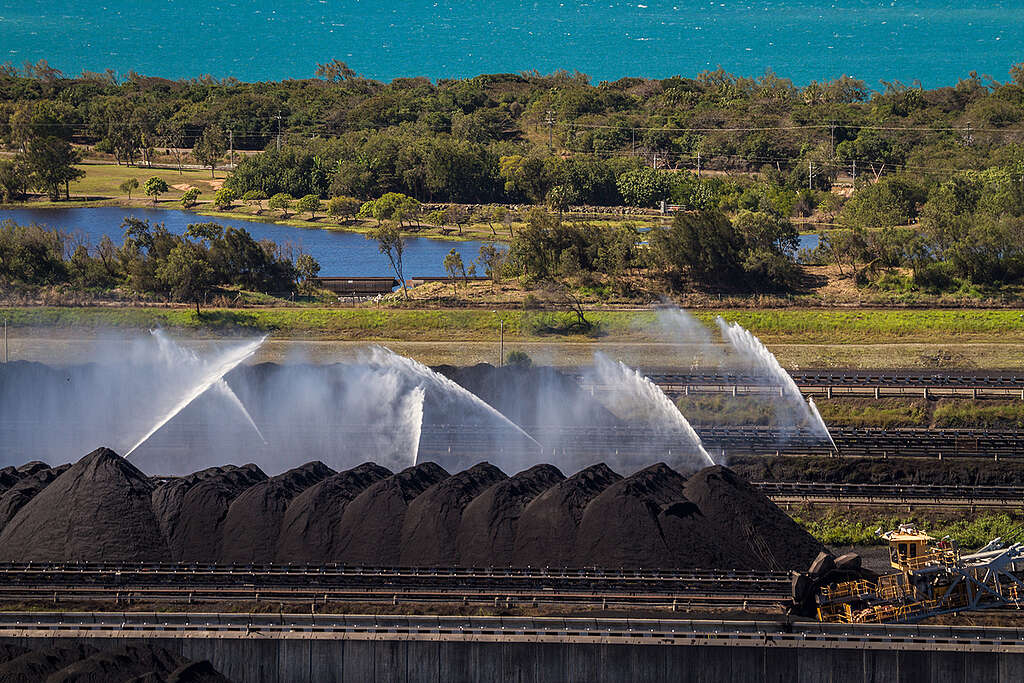
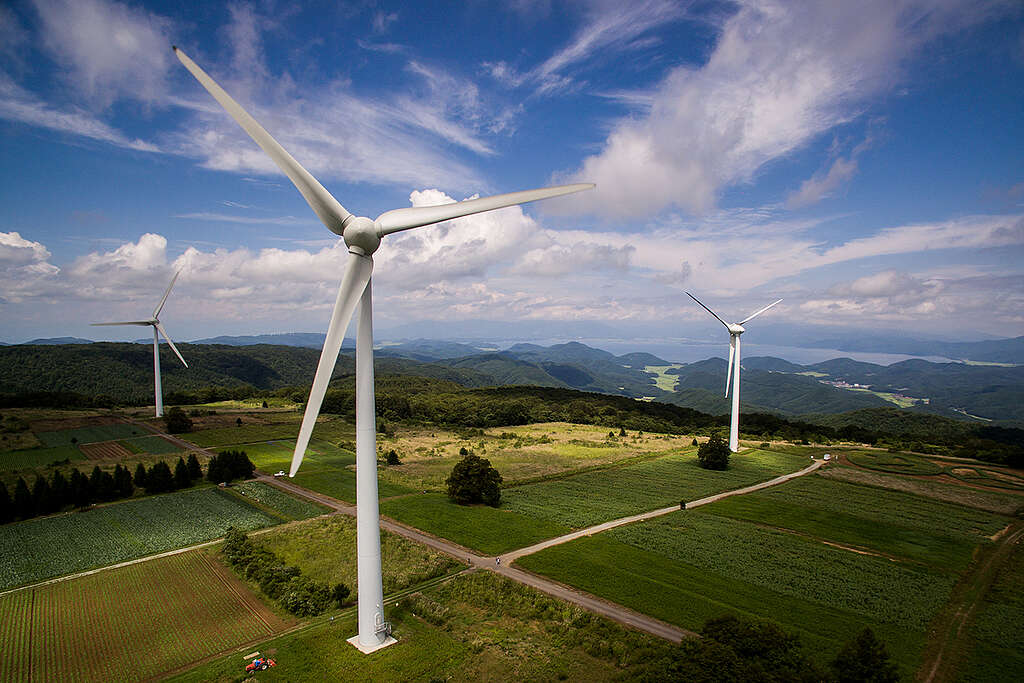
What can be done
Greenpeace is campaigning for Australian companies and Governments to phase out polluting fuels and replace them with clean energy.
We started with Australian businesses through our Re-Energise campaign, pressuring Bunnings, Woolworths, Coles, Kmart, and ALDI to make clean energy targets.
Now we are working to have the Federal Government replace the 116 new fossil fuel projects it is planning with renewables instead.
What is Renewable Energy?
There are two main ways our society gets the energy needed for everything we do, whether that is agriculture, transport, manufacturing, cooking, lighting or entertainment, amongst countless other things.
- One way is with non-renewable sources, like coal, oil and gas. These are non-renewable because once we have used them up, they won’t replenish for millions of years. That is why they are called fossil fuels. These types of energy generation (whether burnt directly for transport, like cars, or indirectly for electricity generation) involve the release of massive amounts of pollution and greenhouse gasses, like carbon dioxide, soot, sulphur and nitrous oxides, amongst so many others. These all cause health concerns in the form of breathable pollution and environmental danger in the form of climate change – “the biggest threat to security that modern humans have ever faced”
- The second way is from renewable energy sources, like solar, wind, hydro and other forms of energy generation that do not depend on digging up and burning hazardous and polluting fossil fuels. These types of energy production take advantage of natural sources of energy like the sun, the wind and the water. They are renewable because they do not deplete, giving us free energy for all our needs. The best thing about renewable energy is that they do not pollute the atmosphere or the land and leave our cities and our environment cleaner than even the cleanest of fossil fuels
Fossil fuels and the pollution and carbon dioxide they represent need to be left in the ground to prevent our climate warming at an ever accelerating rate, killing off species and making our environments less habitable for all life – including us.
Types of Renewable Energy
Solar and wind energy form the dominant bulk of renewable energy produced today, and gather the largest investments in development and technological advances. Solar and wind will likely form the backbone of our future renewably-powered clean and sustainable energy grids.
Solar power uses light or heat from the sun to produce electricity. The Earth receives 10000x the energy the human race uses from the Sun.
The solar panels people may have on their roofs use photovoltaic (PV) cells to directly convert light to electricity to power your lights and appliances. PV solar is by far the most common form of solar energy generation.
Heat from the sun can also be used to heat up water or other fluids which can then be used to heat residential hot water systems or to drive turbines that spin generators to create electricity in concentrated solar power (CSP) plants.
Solar energy only works when the sun is shining, so nighttime and poor weather hinder its performance, making it unreliable. This can be alleviated by using large scale energy storage systems such as battery arrays or pumped hydro (where water is pumped to a higher elevation with the solar power, which stores potential energy. When that energy is needed, the water is released, spinning turbines which generate electricity). With the rise in affordable energy storage in recent years, the unreliability of solar power is now a thing of the past.
In the past, solar PV was expensive, but this has been superseded by technology and investment in scaled production. Solar power is now cheaper than the cheapest of fossil fuels.
Wind power uses the wind to produce electricity.
Onshore wind farms use large wind turbines on land in windy areas to produce electricity as they spin like large fans. They can be massive, but rarely produce noticeable noise and there is evidence that they pose minimal threat to bird life.
Offshore wind farms place the wind turbines in the ocean where wind is often stronger and more consistent. They may float with anchors attaching them to the ocean floor, or may be statically fixed to the seabed. There is no substantial evidence that they are a danger to whales and other marine mammals. Additionally, offshore wind farms can create artificial reefs, which provide an oasis of protection and habitat for marine creatures.
Similar to solar power, as wind power is only generated while the wind blows, it can be unreliable. When paired with solar arrays and battery storage, these elements provide the best path forwards to a sustainable, renewable-energy-powered world.
Hydro power, or hydroelectric power, uses the kinetic energy of flowing or falling water to produce electricity.
It involves building dams on rivers to create reservoirs. When water from these reservoirs flows through turbines, it spins them, activating generators that produce electricity. This method is clean and sustainable, relying on the Earth’s water cycle and emitting no greenhouse gases.
However, like all construction, dams can lead to environmental and social issues, such as ecosystem disruption and community displacement. Where dams are required for drinking water and irrigation, hydropower is a powerful and attractive form of renewable energy.
Geothermal power harnesses heat from the Earth’s interior to generate electricity.
This process involves drilling wells into geothermal reservoirs to bring hot water or steam to the surface, which then drives turbines connected to generators. Due to installation costs, it works best in seismically active regions where heat from the Earth’s mantle blooms closer to the surface. Geothermal energy is considered environmentally friendly and sustainable, providing a reliable and constant power supply with minimal greenhouse gas emissions.
Ocean energy production involves harnessing the energy from ocean waves, tides, and thermal gradients to generate electricity.
Wave energy converters capture the energy of surface waves to drive turbines, while tidal energy uses the natural rise and fall of ocean tides to power underwater turbines. Ocean thermal energy conversion (OTEC) exploits the temperature difference between warmer surface water and colder deep water to produce power. This form of energy is abundant and renewable, offering significant potential for sustainable electricity generation. However, the development of ocean energy technologies faces challenges related to environmental impacts, technological readiness, and the cost of deployment in marine environments.
Biomass energy production involves converting organic materials, such as plant matter and animal waste, into electricity, heat, or fuel.
This process can include direct combustion to produce heat, anaerobic digestion to create biogas, or the conversion of biomass to liquid biofuels for transportation. Biomass is considered a renewable source of energy because it involves the use of materials that can be replenished naturally. It may play a crucial role in reducing reliance on fossil fuels and helps in mitigating greenhouse gas emissions when managed sustainably. However, the sustainability of biomass energy can vary, depending on factors such as the source materials and the methods used for cultivation, collection, and conversion.
In the future, it may provide answers to the mobile and energy-intensive needs of transport sectors, but the combustion of biofuels and biogas still creates pollution.
Can Renewable Energy Be Used For Everything?
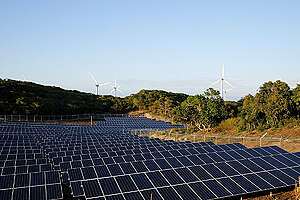
Renewable energy should be able to power close to 100% of our electricity grids with well managed investment and development. That future would be incredible; clean, green and sustainable, with cleaner cities, healthier people and safer wildlife.
However, currently, renewable energy cannot practically power elements of our transport sectors; it would require huge technological leaps to power aircraft, ships and some larger trucks with electricity. This is simply due to the relative energy density of fuels and batteries; jet fuel, for example, has an energy density of 43.15 MJ/kg, while the best lithium ion batteries have an energy density 0.9 MJ/kg. Perhaps the most promising technology to solve this issue is the production of sustainable and ethical biofuels that can be used in similar ways to jet fuel and diesel.
Is Renewable Energy Different to Renewable Electricity?
In the modern world, these two concepts are almost identical. Solar panels, wind turbines and hydropower dams all produce renewable electricity, which is a type of renewable energy. It is by far the most common type of renewable energy we have today, so for practical purposes, these terms are often used interchangeably.
However, in the future, renewable energy might also include high-energy-density fuels (biofuels) that have been produced renewably that will allow our planes, ships and other high-powered sectors to operate as they currently do on polluting fossil fuels – just without the fossil fuels.
Why Are Renewable Energies Important?
Renewables are so important because they provide the best path forward in human progress without destroying the environment or climate. Climate change has accelerated since the beginning of the Industrial Revolution, ever since we started burning coal for energy. It is caused by more energy being trapped in our atmosphere by the greenhouse effect – the more carbon dioxide in our atmosphere, the more of the Sun’s energy gets reflected back to our surface by the atmosphere.
This not only warms our planet, but it also adds instability to our Earth systems, most notably the climate. This can look like more extreme droughts, heavier storms, more frequent cyclones and wilder bushfires. Climate change can also cause entire ecosystems to collapse and huge areas to become unable to support society. Humans depend on the Earth and environment around them for survival – water, food and shelter. Without a hospitable environment for us to live in, we do not live. Climate change is an existential threat.
Renewable energy provides a way to develop our technology in a way that does not risk our survival. They provide employment opportunities to huge swathes of society and best of all, they allow us to wean off of our reliance on toxic fossil fuels.
Why Do We Still Use Fossil Fuels?
We are slow to change. Scientists have known of climate change for decades, but the greed of extreme capitalism pursues profits at the expense of our very planet. We don’t have a second planet if we burn this one.
Fossil fuels represent the historically easy route. A few centuries ago, coal and crude oil gave us access to incredible technology and allowed the Industrial Revolution to flourish. But now, with advances in technology, renewable energy has taken over as the most cost effective and better option. However, huge fossil fuel companies have immense sunk costs in their destructive infrastructure and do not want things to change, lest their profits vanish. These companies have enormous political influence and lobby politicians to allow them to continue mining coal and drilling for oil and gas.
It needs to stop. We don’t have a second chance when it comes to our survival.
Help end the age of fossil fuels
Right now, Greenpeace is working to take on the biggest polluters and stop new coal, oil and gas projects in Australia. We’re holding corporations and governments to account, taking direct action and investigating and exposing them.
We still have time. What happens next is in our hands.
Keep informed
Together we are part of a growing, global movement determined to bring about the changes our planet desperately needs. Sign up to receive updates on our campaigns.
